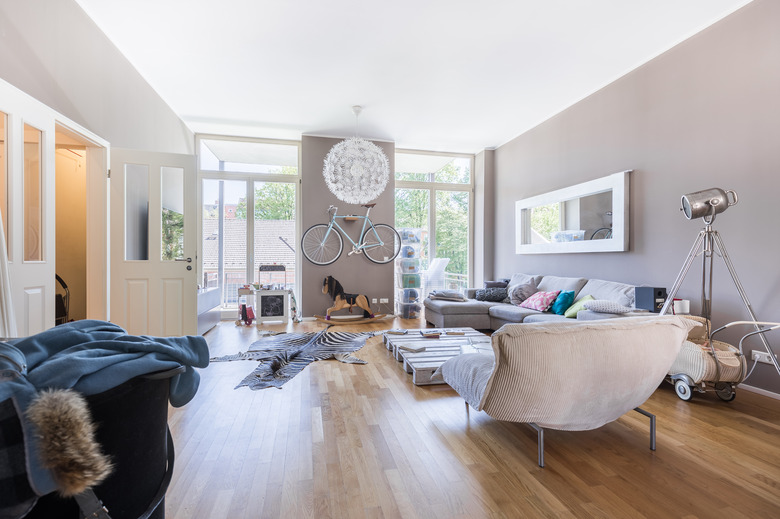How To Dry Out The Subfloor After A Water Leak
Wood flooring is a beautiful addition to any home. It is versatile and has a long lifespan — if it is well maintained. If moisture or water damage happens to the flooring, it must be taken care of immediately in order to minimize the long-term effects that humidity could have on the wood.
For homeowners who have water infiltration, drying out the area to prevent any permanent damage to the flooring is a rather simple process that can be accomplished with a few pieces of essential equipment.
Water Spill On Hardwood Floor
Water Spill On Hardwood Floor
When people think of water damage, they often think of flooding or water infiltration that is out of our control. What many people don't realize is that some water damage can actually be prevented because it is self-inflicted.
Flooding is an obvious cause of water damage because it is a large amount of water that comes into your home without warning, and direct action is usually taken to fix the problem. But what most people don't realize is that spills even as small as a toppled glass of water can have damaging effects if not taken care of immediately.
First and foremost, make sure to soak up any excess water that is seen lingering on the surface of the floor. This is to make sure that it does not absorb into the wood or flow into the cracks, which would cause damage to the subfloor. Not only should liquid be removed from the flooring, but any water soaked items, as well. If left on the hardwood, these items can cause just as much damage as a major water leak. By doing these simple prevention methods, it can save you quite a headache later on.
Drying Out Sub-flooring
Drying Out Sub-flooring
If flooding occurs, and there is water leaking into the sub-flooring, it is crucial to dry out the subfloor as soon as possible. The first step is to absorb any water lurking on the surface of the floor. Then, place a dehumidifier at high settings to pull out any moisture that is still in the air. If the water leak is localized in one area, make sure to isolate that area by either closing the door or blocking off the doorway with a plastic tarp.
Blocking off the passageways and isolating the area will decrease the amount of time it will take to remove all signs of moisture. If left in an open space, the humidifier will not be able to focus on the affected area, causing the process to take much longer than desired.
Place as many fans as possible in the room so that the air is circulated in the entire space. If there is access to the flooring from a lower level, be sure to place fans there, as well, pointing to the damaged areas. The fans must also be set at high levels and left on until the subfloor is completely dry.
Drying Various Types of Wood Flooring
Drying Various Types of Wood Flooring
Water leaks can happen under various types of flooring. There can be water under engineered wood floor, as well as water under wood laminate flooring. Regardless of the type of wood flooring, if water or moisture has been sighted, the method above can be used to remove the moisture and return the floor to a dry state.
Keep in mind that mother nature can also help out if the disaster happen in a room with plenty of sunlight. Open the blinds and let the sunlight in so that it can help absorb the moisture. If weather permits, open the windows to help the drying process, as well. It will keep the air circulating, which is important to remove all signs of humidity.
